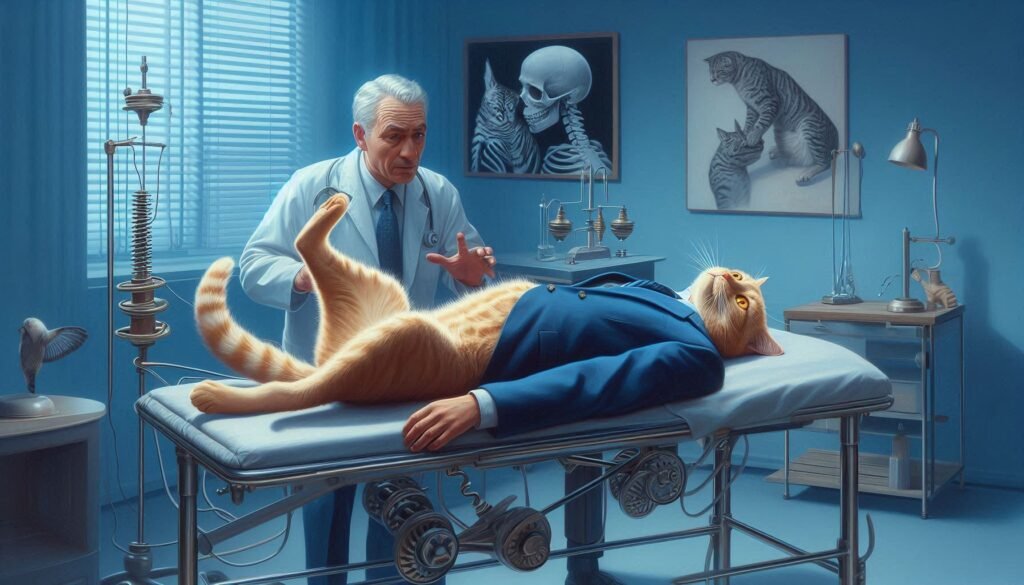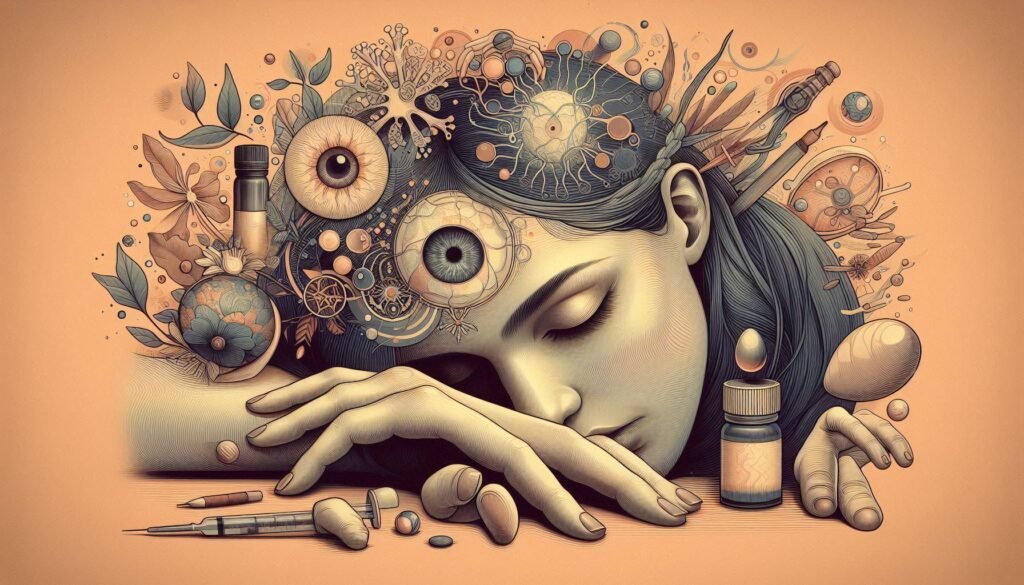Catatonic posturing is a fascinating yet complex phenomenon that often puzzles observers. Imagine a person frozen in an unusual position, seemingly disconnected from their surroundings. This intriguing behavior can occur in various contexts, particularly within the spectrum of catatonia—a condition marked by disturbances in movement and behavior.
Understanding catatonic posturing goes beyond mere observation; it reveals essential insights into mental health and neurological function. From subtle shifts to extreme stances, these body positions carry significant meanings that reflect the underlying state of the individual. In this blog post, we’ll explore what catatonic posturing entails, its types and causes, how to identify it effectively, and approaches for treatment and management. Join us on this journey through the intricate world of catatonia as we unravel its mysteries together.

Defining Catatonic Posturing: Unusual Stances and Their Significance
Catatonic posturing refers to the maintenance of abnormal body positions for extended periods. These stances can range from mildly unusual to strikingly extreme, often leaving observers perplexed. Individuals may adopt these positions voluntarily or involuntarily, reflecting a disconnect between their physical state and cognitive awareness.
The significance of these postures lies in their potential to indicate underlying psychological or neurological conditions. They often emerge during severe mental health episodes, including schizophrenia and mood disorders. Understanding these behaviors is crucial for caregivers and healthcare professionals as they can serve as vital diagnostic clues.
Moreover, catatonic posturing is not just about the position itself; it communicates an emotional state that may be difficult for individuals to articulate verbally. Recognizing specific postures aids in assessing the severity of a person’s condition and determining appropriate interventions.
While some may view catatonic posturing merely as odd behavior, its implications extend deeply into understanding an individual’s mental well-being and overall health status.
Types of Catatonic Postures: From Subtle to Extreme Positions
Catatonic posturing can manifest in a variety of ways, ranging from subtle to extreme positions. Subtle forms might include slight rigidity or an unusual tilt of the head. These minor adjustments may go unnoticed but are significant indicators of underlying distress.
As severity increases, individuals might adopt more pronounced stances. For instance, they could remain motionless for extended periods while holding their arms in peculiar angles. This type of posture can make them appear statuesque, often drawing attention and concern.
Extreme cases involve dramatic and sustained positions that seem almost impossible to maintain. Some people may contort their bodies into unfamiliar shapes or hold a fixed position for hours on end, showcasing the stark nature of catatonia.
These variations highlight the spectrum of catatonic posturing and its impact on daily life. Understanding these differences is crucial for appropriate identification and intervention strategies tailored to each individual’s needs.
The Neurological Basis of Catatonic Posturing: Why It Occurs
Catatonic posturing stems from complex neurological processes. It involves disruptions in brain circuits that regulate movement and behavior, particularly those found in the basal ganglia and frontal cortex. This interference can lead to abnormal motor responses, causing individuals to adopt unusual body positions.
Neurotransmitters such as dopamine play a significant role in catatonia. An imbalance may trigger the characteristic rigidity or immobility associated with these postures. Stressful events or underlying psychiatric conditions often exacerbate this disruption.
Additionally, metabolic factors and neuroinflammation can contribute to catatonic symptoms. Certain medical conditions like infections or autoimmune disorders might also influence how the nervous system responds, thereby impacting posture.
Understanding these neurological underpinnings is crucial for effective treatment strategies. By addressing these pathways, healthcare professionals aim to restore normal function and improve patient outcomes related to catatonic posturing.
Identifying Catatonic Posturing: Key Features and Observations
Identifying catatonic posturing requires keen observation of unusual body positions. These stances can range from immobility to rigid or awkward poses. Patients may maintain these positions for extended periods, sometimes appearing as if they are frozen in time.
One key feature is the absence of voluntary movement. Individuals may not respond to external stimuli, remaining unresponsive even when prodded or spoken to. This lack of reaction distinguishes catatonic posturing from typical behavioral responses.
Another important observation involves symmetry and rigidity in the body’s alignment. Many patients display a characteristic stiffness, which can lead to discomfort over time. The limbs might be held at odd angles, creating an impression of tension throughout the body.
Facial expressions often remain blank during episodes of catatonia. This emotional detachment is notable alongside physical manifestations and adds another layer for healthcare professionals when assessing a patient’s condition effectively.
Differentiating Catatonic Posturing from Other Movement Disorders
Catatonic posturing can often be confused with other movement disorders, making accurate diagnosis crucial. Unlike conditions such as Parkinson’s disease or dystonia, catatonic posturing typically involves a state of immobility or unusual fixed positions rather than rhythmic movements or tremors.
In Parkinson’s, for instance, individuals experience bradykinesia and rigidity alongside tremors. These symptoms differ from the static nature of catatonic postures where patients may remain in one position for extended periods without typical motor fluctuations.
Dystonia is characterized by involuntary muscle contractions leading to twisting motions. In contrast, catatonia presents more as a lack of voluntary movement combined with bizarre body configurations that can last hours or days.
Additionally, features like waxy flexibility and negativism are unique to catatonia. Identifying these characteristics helps healthcare professionals differentiate between various movement disorders and tailor appropriate treatment strategies effectively.
The Impact of Posturing on Physical Health and Comfort
Catatonic posturing can significantly affect a person’s physical health and overall comfort. When an individual maintains unusual positions for extended periods, it can lead to muscle stiffness and discomfort. This rigidity not only affects mobility but also causes pain, which may further exacerbate the individual’s distress.
Prolonged postures can create additional pressure on certain areas of the body, increasing the risk of developing pressure sores or skin breakdown. These complications are particularly concerning for individuals who may already be vulnerable due to their mental state.
Moreover, maintaining such rigid stances can impact circulation and respiratory function over time. Restricted movement can hinder blood flow, leading to possible issues like swelling or even deep vein thrombosis in severe cases.
The psychological toll should also be considered; discomfort from prolonged posturing often contributes to heightened anxiety levels. Addressing these physical health concerns is crucial for improving quality of life in those affected by catatonia.
Assessing Severity: How Posturing Reflects Overall Catatonic State
Assessing the severity of catatonic posturing is crucial in understanding a patient’s overall catatonic state. The rigidity and positioning of the body can indicate underlying psychological distress or neurological issues. Careful observation allows clinicians to gauge how deeply affected an individual may be.
Different postures can reflect varying levels of severity. Mild cases may involve slight stiffness or unusual poses that do not interfere with daily life, while extreme positions might lead to significant discomfort and functional impairment. These extremes often require immediate attention.
The duration of these postures also plays a role in assessment. Short-lived instances may suggest temporary stress responses, whereas prolonged stasis could signal chronic conditions needing specialized intervention.
Moreover, accompanying behaviors provide context for severity evaluation. Changes in speech patterns, responsiveness, and emotional expression offer valuable insights into the overall mental state tied to the observed posturing. Understanding this dynamic aids healthcare providers in tailoring appropriate treatment strategies.
Treatment Approaches: Breaking the Posture Cycle in Catatonia
Treatment for catatonic posturing focuses on breaking the cycle of rigidity and unusual body positions. One effective approach is pharmacotherapy, which often includes the use of benzodiazepines or antipsychotics to alleviate symptoms. These medications can help reduce muscle tension and promote relaxation.
Psychotherapeutic interventions also play a crucial role in treatment. Techniques such as supportive therapy can empower patients to regain control over their movements and emotions. This specialized support fosters an environment where individuals feel safe to express themselves without fear of judgment.
Physical therapy may be implemented alongside these treatments, focusing on gentle stretching and movement exercises. This helps maintain flexibility and reduces the risk of injury due to prolonged posturing.
In some cases, electroconvulsive therapy (ECT) may be considered for severe or treatment-resistant catatonia. ECT has shown effectiveness in rapidly alleviating symptoms when other methods have failed, providing hope for those affected by this debilitating condition.
Rehabilitation Strategies: Restoring Normal Movement Patterns
Rehabilitation strategies for catatonic posturing focus on restoring normal movement patterns and enhancing overall mobility. Engaging in physical therapy is often a crucial step. This can include guided exercises that promote flexibility, strength, and coordination.
Incorporating sensory stimulation techniques can also be beneficial. Activities like gentle touch or auditory cues may help awaken responsiveness in individuals with catatonia. These methods support the re-establishment of neural pathways essential for movement.
Another effective approach involves gradual, repetitive movements to counteract rigidity associated with catatonic posturing. Practitioners might use rhythmic motion to encourage fluidity in body dynamics, allowing patients to break free from static positions over time.
Maintaining a supportive environment is critical during rehabilitation. Family members and caregivers play an essential role by encouraging participation while ensuring comfort and safety throughout the recovery process. Consistency and patience are key elements as individuals work towards regaining normalcy in their movements.
Long-Term Management: Preventing Recurrence of Catatonic Posturing
Long-term management of catatonic posturing focuses on preventing recurrence and ensuring the well-being of affected individuals. A comprehensive treatment plan is essential for sustaining positive outcomes. Ongoing therapy, including medication adjustments and psychological support, plays a critical role in this process.
Regular follow-ups with healthcare providers can help monitor symptoms and make necessary changes to treatment protocols. Engaging patients in supportive environments fosters resilience against stressors that may trigger episodes.
Education about catatonia and its manifestations empowers both patients and caregivers, promoting understanding and vigilance towards early signs of relapse. Establishing healthy routines, such as balanced nutrition, exercise, and adequate sleep, also contributes to overall stability.
Integrating relaxation techniques like mindfulness or yoga can enhance mental health while reducing anxiety levels associated with catatonic states. By addressing these factors holistically, it becomes possible to minimize the likelihood of recurring catatonic posturing while improving quality of life for those affected.


